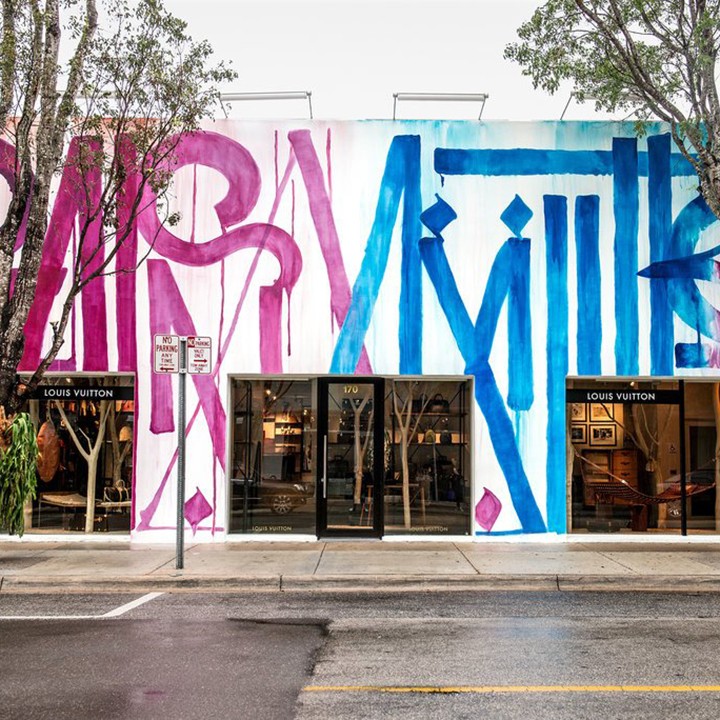New York Times

Here Comes the Neighborhood
January 25, 2013
As parties go, it was pure spectacle. The celebrity-heavy crowd at the Moore Building, a landmark in Miami’s Design District, was celebrating the opening of Dior Homme nearby, swaying to electro-pop, rubbing shoulders with the likes of Pharrell Williams, Martha Stewart and Calvin Klein, and oozing like a lava spill into the street.
The scene, during Art Basel Miami Beach last month, seemed full of promise, heralding the rebirth of this once-blighted area, soon to be animated, if investors have their say, by an influx of diners, art and design lovers, and style-struck shoppers flocking to new luxury outposts like Hermès and Céline.
So it was surprising to find on a visit last week, that the same swatch of turf stretching from Northeast 38th to Northeast 42nd Street, had the oddly haunted feel of a schoolyard in August. “The place is so empty,” lamented Lucie Hugary, a photographer and frequent visitor, a comment often echoed by tourists more accustomed to shopping, barhopping and crowd-gazing on teeming Lincoln Road.
But if traffic here is sparse most days, Craig Robins seems unfazed. Mr. Robins, the developer and force behind this area’s renaissance-in-progress, says he is content to bide his time. “Growth here is a process,” he says of the neighborhood, which until recently was home mostly to a string of high-end furniture showrooms and a handful of popular dining spots. “Here things build organically.”
The Design District’s location — within a pebble’s throw of Interstate 95 and roughly 15 minutes by cab from South Beach — would seem to argue in its favor. As does Mr. Robins’s timing, in sync with a boom in luxury sales, led in this town by Brazilians and other foreign investors scooping up neighboring condos.
Such factors underpin a proposed $312 million renovation of the area undertaken by Dacra, Mr. Robins’s development group, and L Real Estate, a private equity fund in which LVMH is a minor investor. That ambitious redo, in which L Real Estate has a 50 percent share, is expected within a year or two to transform the Design District into an ultra-high-end retail destination. Its centerpiece, a 4-block, 30-foot-wide tree-lined pedestrian promenade, will be anchored at each end by public plazas and department stores.
Mr. Robins’s fervor for the scheme rests in part on past success (he played a significant role in the early ’90s resurrection of the Art Deco district in South Beach), but mostly on the kind of conviction more commonly found at the megaplex. Build it, he seems to have reasoned, and they are bound to come.
Those who have recently set up shop on Northeast 40th Street, the neighborhood’s chief commercial thoroughfare, include Prada, Hermès, Cartier, Céline, Agnona, and Louis Vuitton.
Vuitton hopes the move will help it reach a younger, more trend-driven clientele, said Valérie Chapoulaud-Floquet, the president of Louis Vuitton North America. The store will move in alongside existing tenants like Marni and Maison Martin Margiela, as well as the cosmetics emporium Brownes, which also still has a store in South Beach, and the fashion boutique En Avance, a defector from Lincoln Road.
They are to be joined in coming months by Tom Ford, Marc by Marc Jacobs and Zegna, to name but a handful, vying for traffic with art galleries stretching north from nearby Wynwood, popular restaurants like Michaels Genuine Food and Drink, or Crumb on Parchment, an upscale sandwich shop.
The project has its champions. Richard Florida, a scholar of urban revitalization, praised the Dacra plan in The Atlantic Cities Web site as “an unmistakable sign that the economic and commercial center of gravity is shifting away from the suburbs and back to the urban core.” Todd M. Glaser, a Miami developer with investments in the district, is a booster, predicting that the opening of an expanded Panama Canal in 2015 would inject the area with a new vitality.
As it stands the Design District is expected to compete with affluent enclaves like Bal Harbour 10 miles to the north and its Bal Harbour Shops, which recently lost premier tenants like Vuitton, Cartier, Céline and Dior to the Design District.
But for now, the neighborhood remains a chicly funky alternative. Eager to break free of the boxy format of most mall boutiques, and to jibe with the area’s arty feel, Louis Vuitton has embellished its storefront with an eye-popping mural by the graffiti artist Retna. The Christian Louboutin facade is overgrown with orchids, the interior enlivened by a faintly Moorish décor.
The Moore Building, with a gravity-defying sculptural installation by Zaha Hadid stretched Flubber-like across the ceiling, is the proposed future site of a department store. Also scheduled to arrive are a boutique hotel, a cluster of condos, some 100 stores and 15 restaurants, and a dozen public art installations, including works from Mr. Robins’s ever-expanding collection.
Rosy as it seems, the district’s boutique-ification leaves some unmoved. Early defectors include Marimekko and Tomas Maier, but others, while keeping their distance, are deferring judgment. Roma Cohen, whose two Alchemist shops on Lincoln Road attract a similarly well-heeled fashion clientele, has fended off suggestions that he move to Northeast 40th Street, preferring to stick with South Beach.
Still, he acknowledged that the Design District is becoming a must-see. “People who are in Miami for more than three days, they know to go there,” he said.